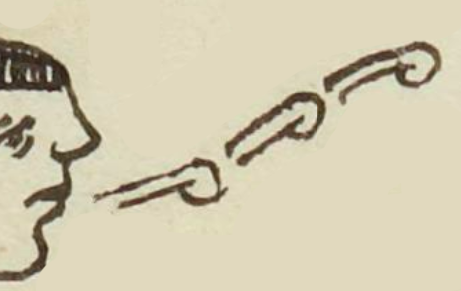Tlatol (MH786v)
This black-line drawing of the simplex glyph for the personal name Tlatol (or Tlahtol, with the glottal stop, “Word,” attested here as a man’s name) shows speech scrolls emerging from the mouth of the tribute payer himself, with his face having a role in the glyph.
Stephanie Wood
Speech scrolls that come out of a human mouth (also, for instance, from an eagle's beak) can represent a range of vocabulary, including: tlatolli (word), itoa (to speak), tzatzi (to announce), motenehua (aforementioned), nahuatl (language, or a pleasant sound), chalani (to speak a lot), and cuica (to sing), among others.
It is interesting that glyphs for tlatolli are typically represented as oral rather than written (whether alphabetic or hieroglyphic), although there are a small number of scrolls shown as written or painted on paper. Oral communication was paramount in Nahua culture.
Stephanie Wood
thorio tlathol.
Toribio Tlatol
Stephanie Wood
1560
Jeff Haskett-Wood
words, palabras, speak, hablar, speech, volutas, nombres de hombres

tlatol(li), speech, words, https://nahuatl.wired-humanities.org/content/tlatolli
La Palabra
Stephanie Wood
Matrícula de Huexotzinco, folio 786v, World Digital Library, https://www.loc.gov/resource/gdcwdl.wdl_15282/?sp=647&st=image
This manuscript is hosted by the Library of Congress and the World Digital Library; used here with the Creative Commons, “Attribution-NonCommercial-ShareAlike 3.0 License” (CC-BY-NC-SAq 3.0).







